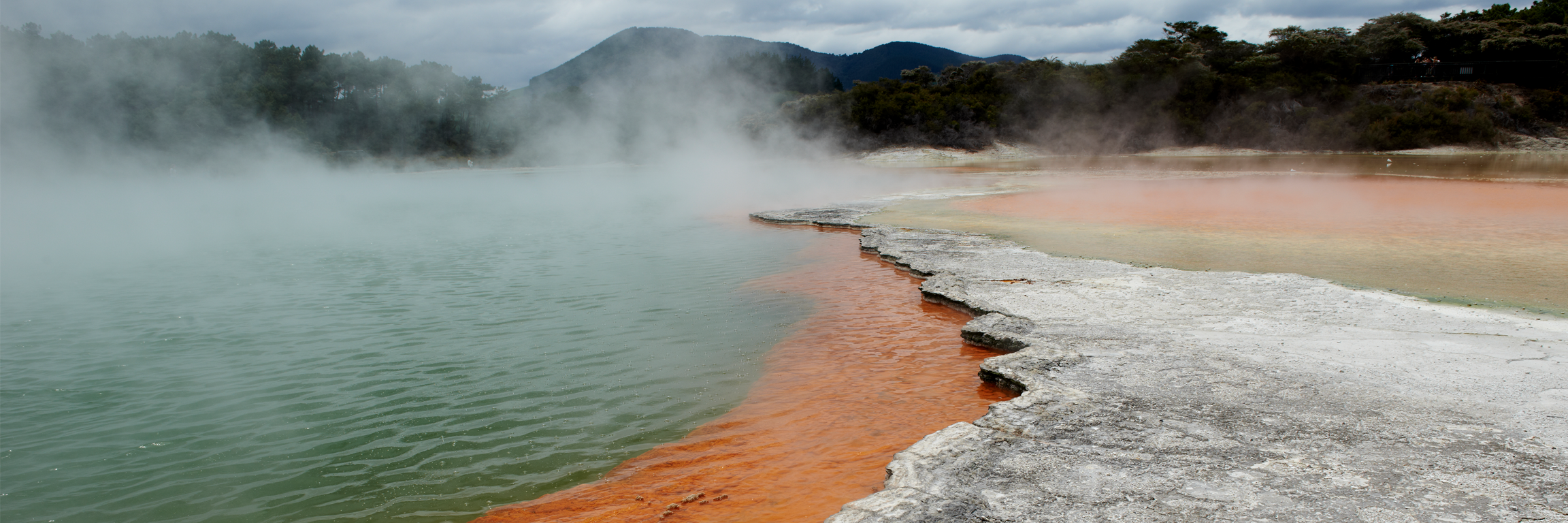Origins
Geothermal areas are very important to Maori and have a variety of uses. We need to manage geothermal developments wisely to protect these taonga.
The legacy of Ngatoro-i-rangi explains the origins of the geothermal resource in Aotearoa.
Ngatoro-i-rangi came to Aotearoa on the Te Arawa waka (canoe). He explored Taupō and was climbing Mount Tongariro when he was struck by the extreme cold. He summoned his sisters Te Hoata and Te Pupu to help him. Their journey to Aotearoa created all the geothermal resources in a direct line from White Island to Tongariro.
Uses
Geothermal resources are highly regarded taonga (treasures) and of considerable importance to the Region’s iwi. Māori use geothermal resources in a variety of ways. The types of hot springs that Māori use include:
- puia (geysering pools)
- ngawha (boiling pools)
- waiariki (warm pools).
Geothermal resources provide hot water for cooking, preserving, healing, ceremonial use, and bathing.
Some pools contain mud with medicinal properties (for example kupapa or sulphur) that are used to treat skin, rheumatic and arthritic ailments.
Māori use geothermal minerals such as kokowai (red ochre) as paints, wood preservatives, and dyes.
Large-scale developments
Large-scale extraction of geothermal fluid or heat by industrial and private users has depleted the fluid in some systems and caused many hot pools to disappear. Geothermal developers wishing to extract fluid or heat may threaten waahi tapu sites near geothermal areas.
Developers must obtain resource consents prior to developing geothermal areas. The resource consent process requires consultation with iwi and considers potential effects on waahi tapu and other significant sites.
Find out about the Tuaropaki Trust’s development of the Mokai Geothermal System.
Glossary
| Māori term | Definition |
| Aotearoa | New Zealand |
| Iwi | Tribe/people |
| Taonga | Something prized or treasured |
| Waahi tapu | Sacred sites |
| Waka | Canoe |

